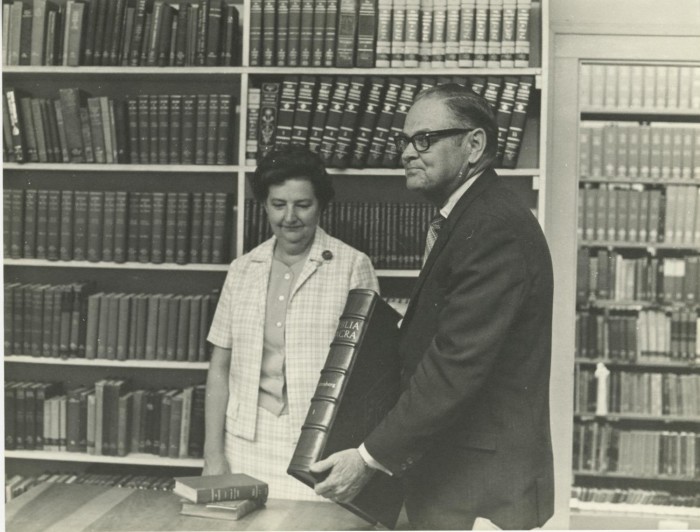That could make a snappy headline, couldn’t it? Above the fold, even.
When Maddie Conatser, Caleb Horne, and Macee Valtr showed up after their biology class one afternoon back in March and pitched their idea, we immediately went back into the stacks and started working. They came prepared with dry swabs, petri dishes, and a clipboard. We had a great time browsing the stacks looking for interesting candidates to swab. I selected books, I think Caleb took pictures and documented titles while Macee and Maddie took turns preparing and executing the swabbing. We collected samples from the spine or front cover, title page, and page 27 from each book. The books I selected span the breadth of our collection: there is something here for everyone…American, African, and European…theology, hymnody, and history…from Coptic Christianity to the German Reformation to Abilene, Texas.
They went back to the lab, processed the samples, and wrote up their findings, which they presented in a poster session a few weeks hence. Their findings, titled ‘Don’t Judge a Book by its Cover: An Analysis of Bacterial Presence on the Surface of Historical Books,’ didn’t surprise us (we expected to find something, and would have been surprised if there were none) but the experiment put them through all the paces of a sound research project. The bonus is that it was just so much fun. It was the first time they saw, much less handled, books of this age, and the opportunity to take a student research team back into the stacks for something like this was a highlight of my semester. I am hopeful Dr. Jennifer Huddleston will assign another team to repeat this process on another batch of books next year. Below are some pictures I took at their poster presentation:
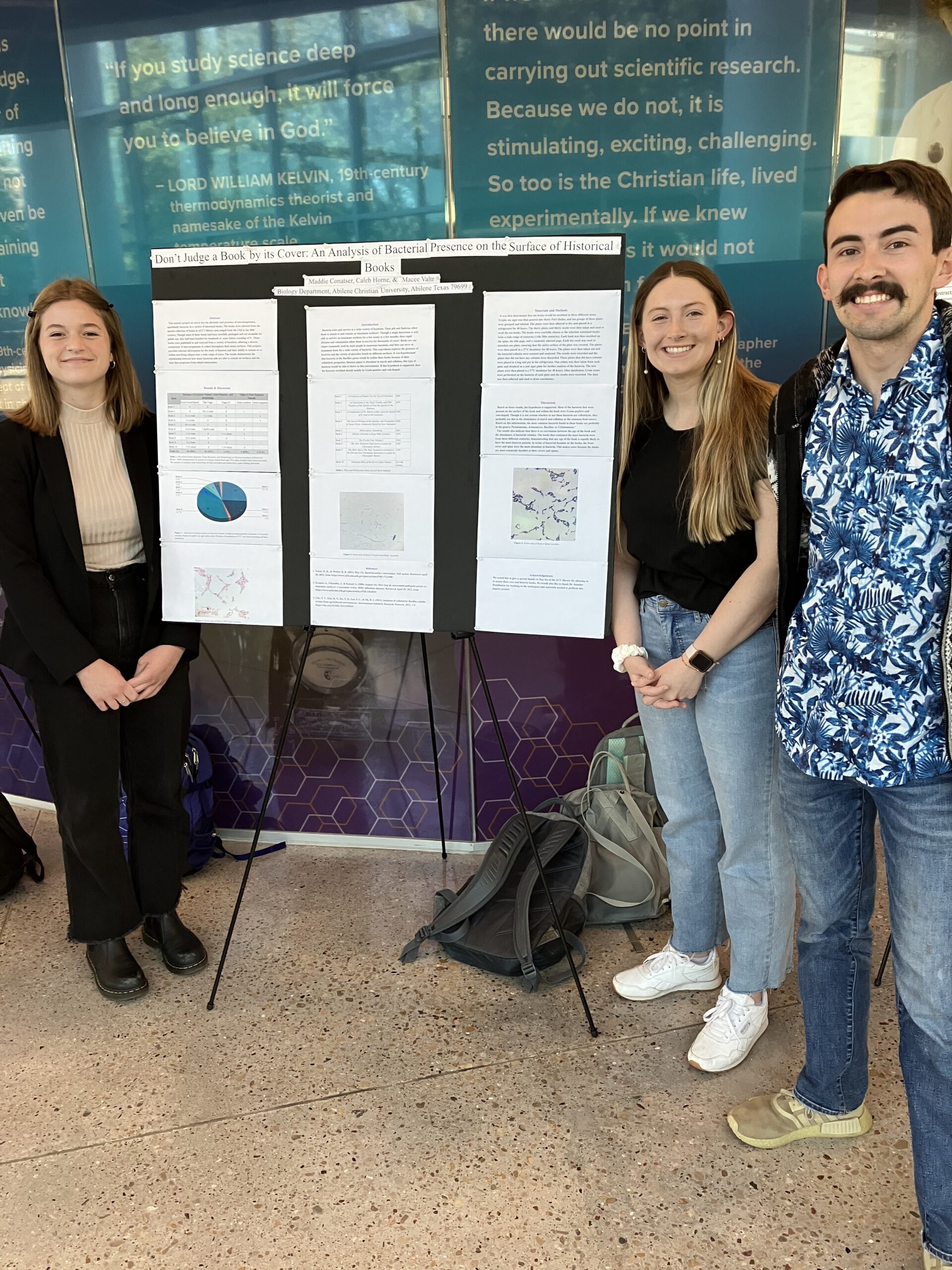
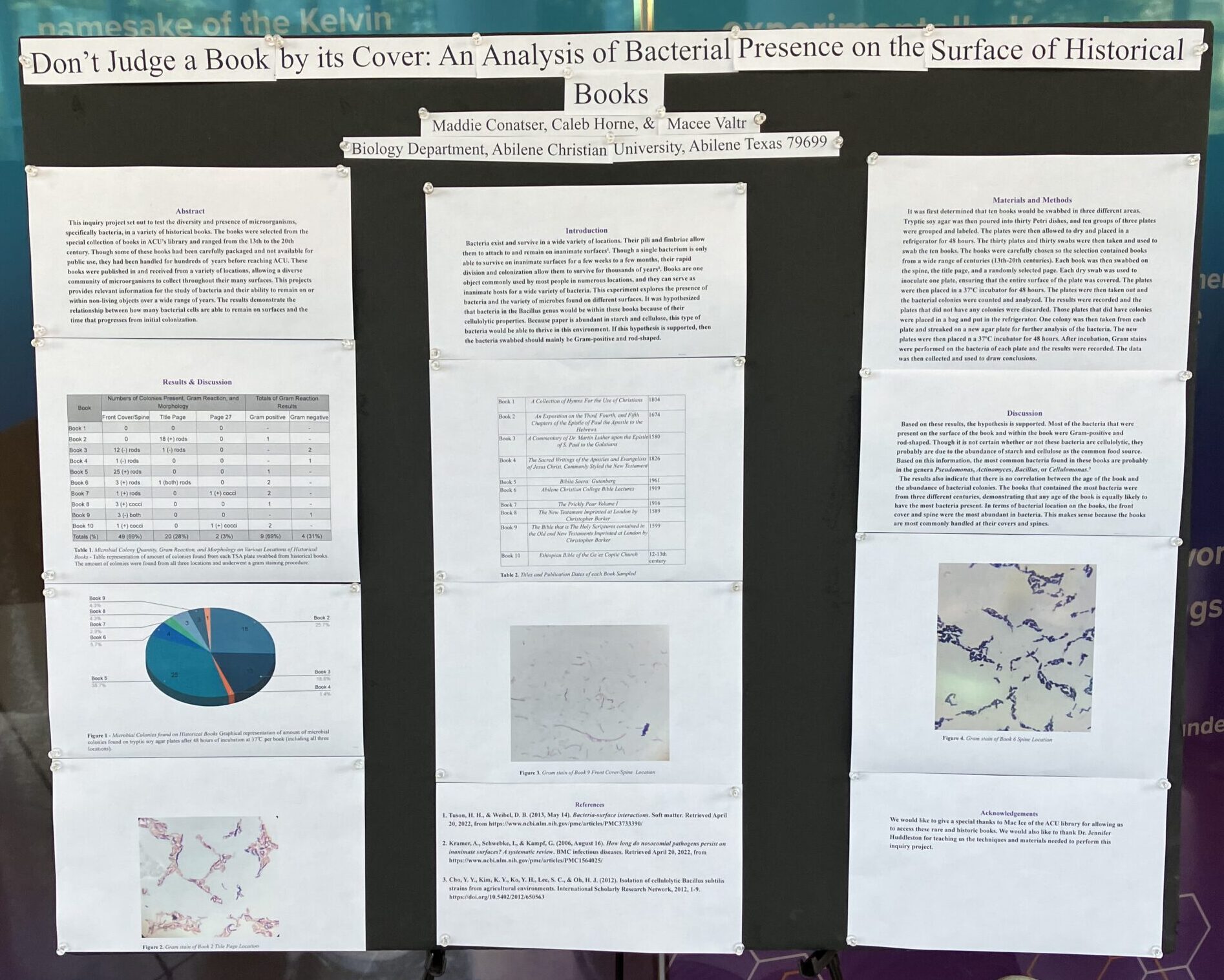
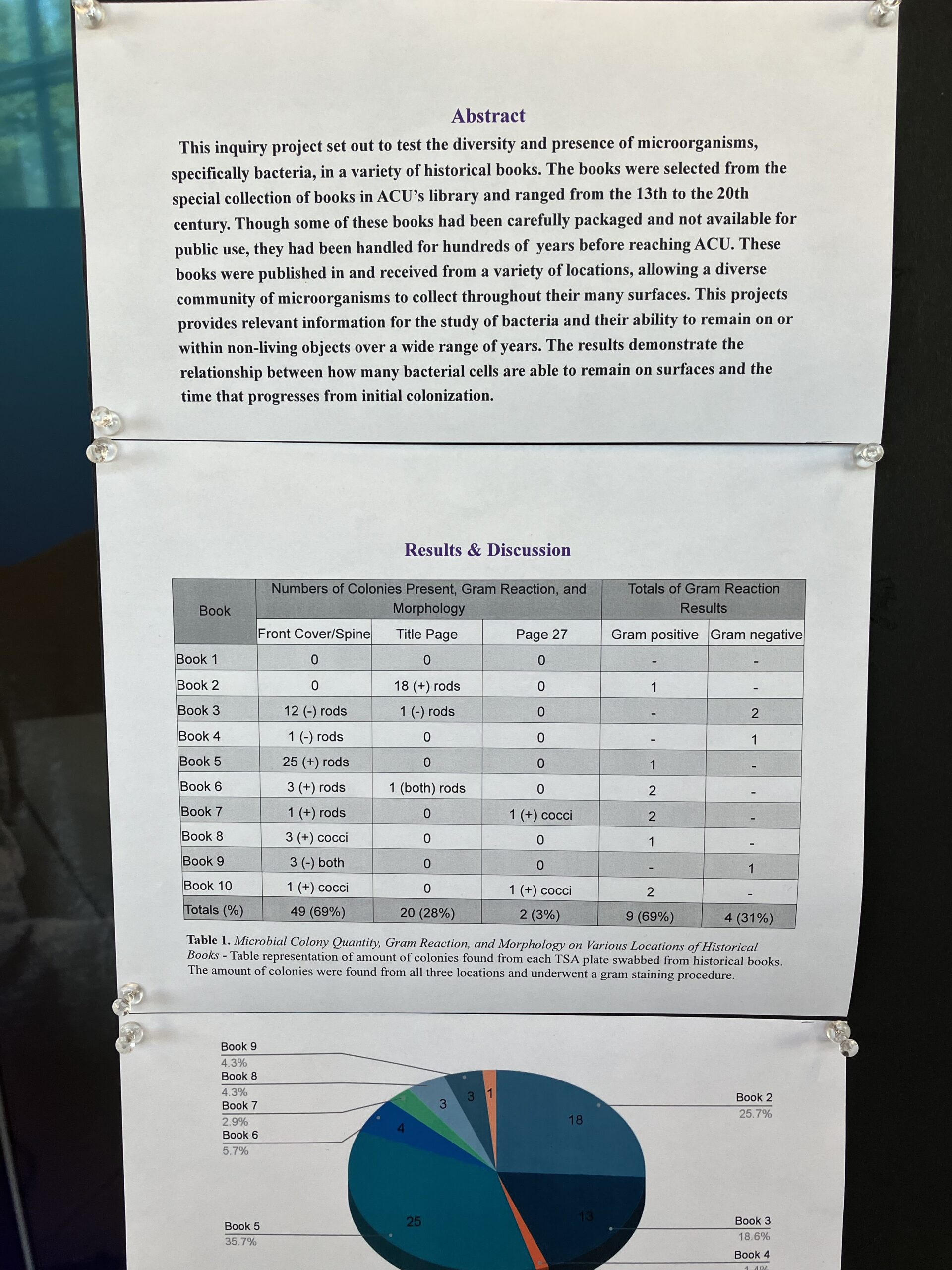
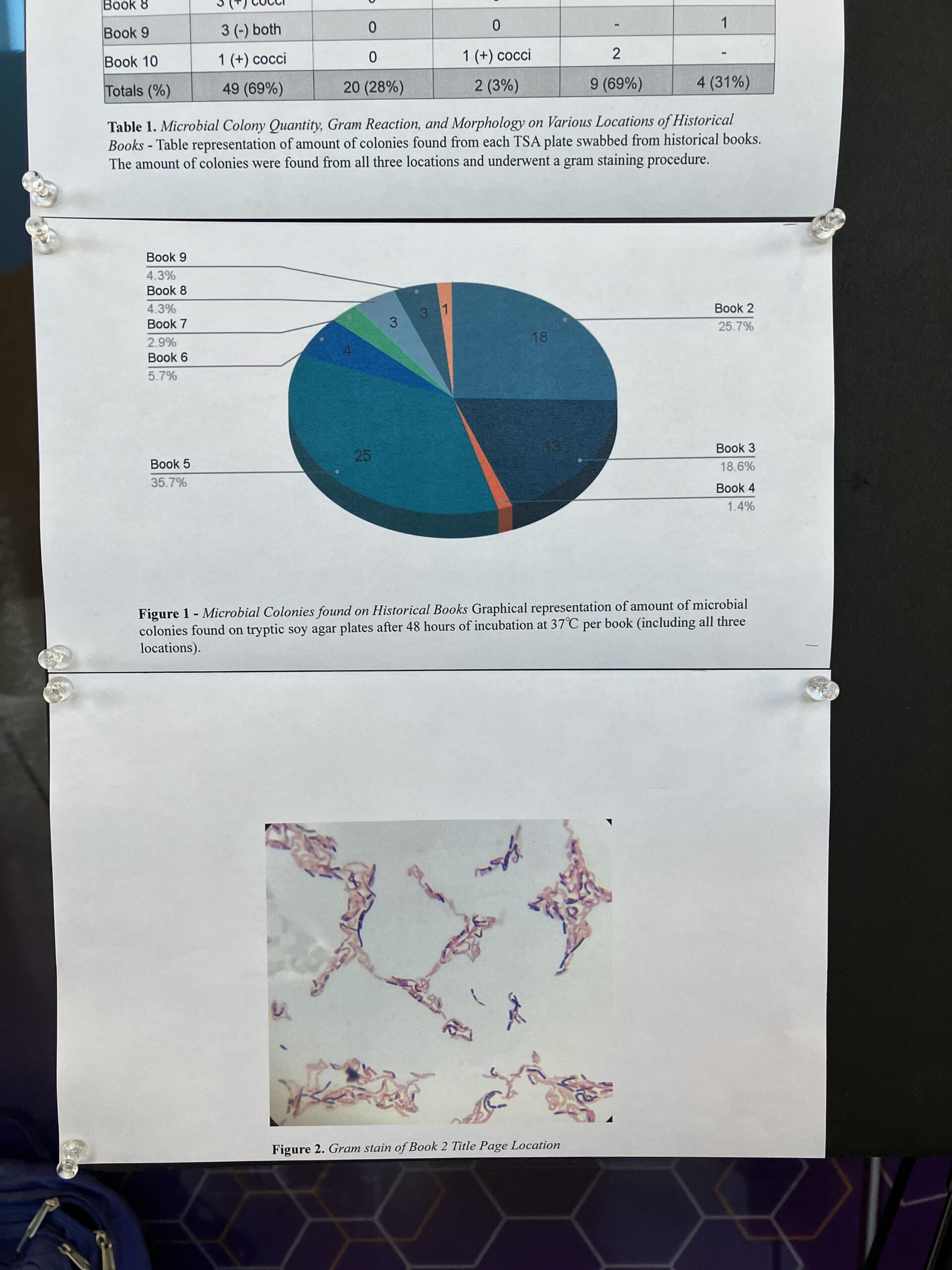
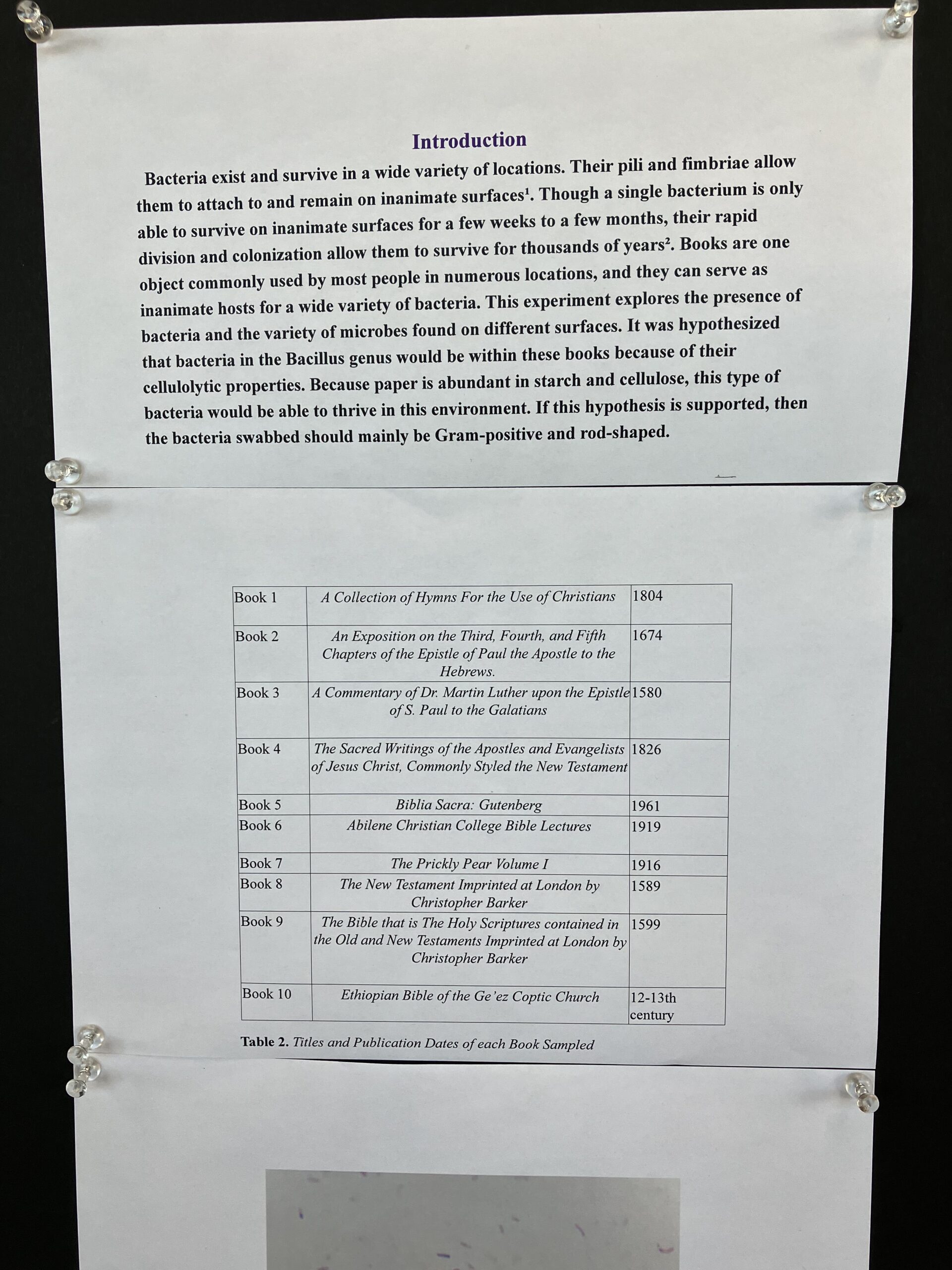

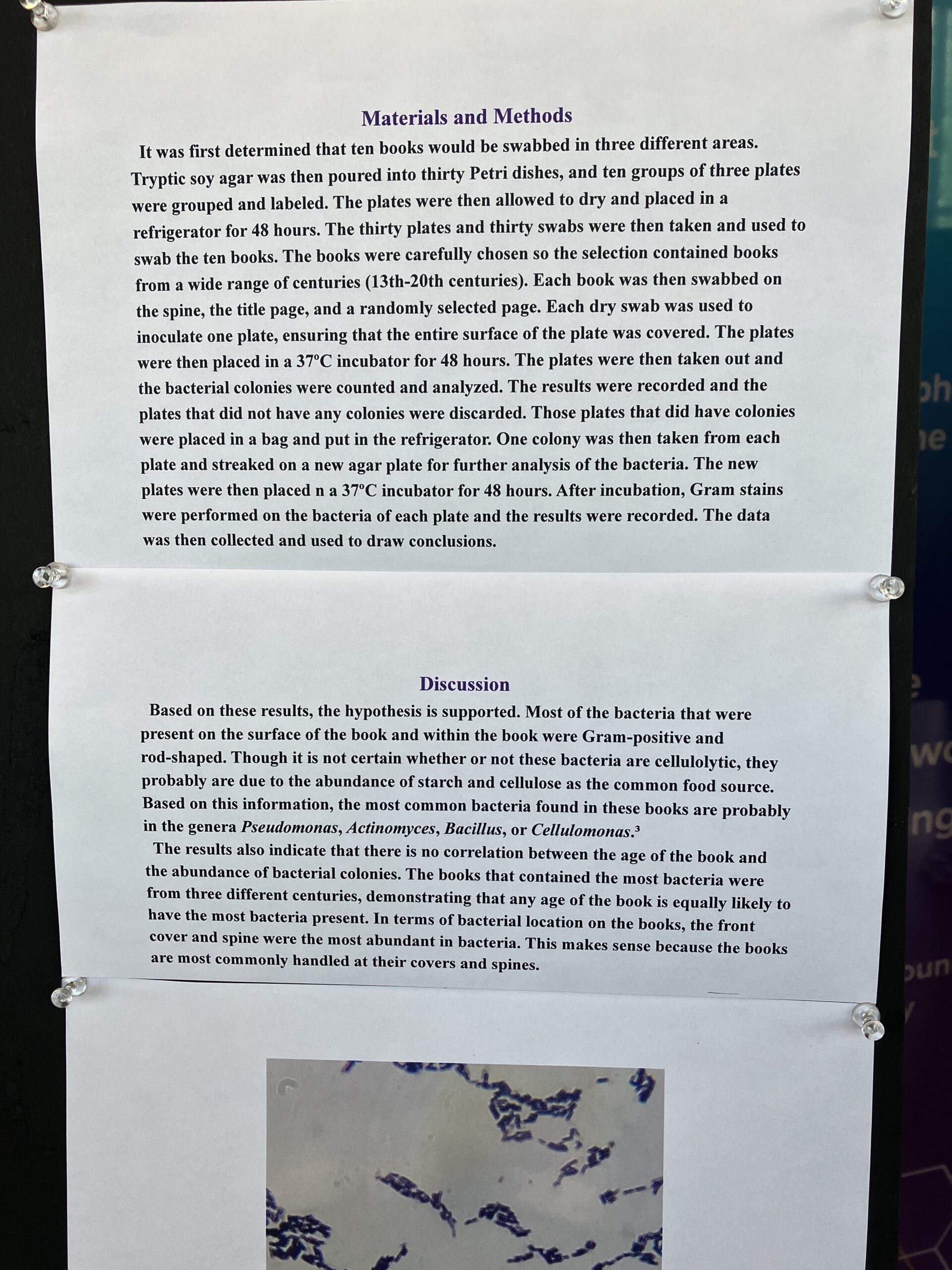
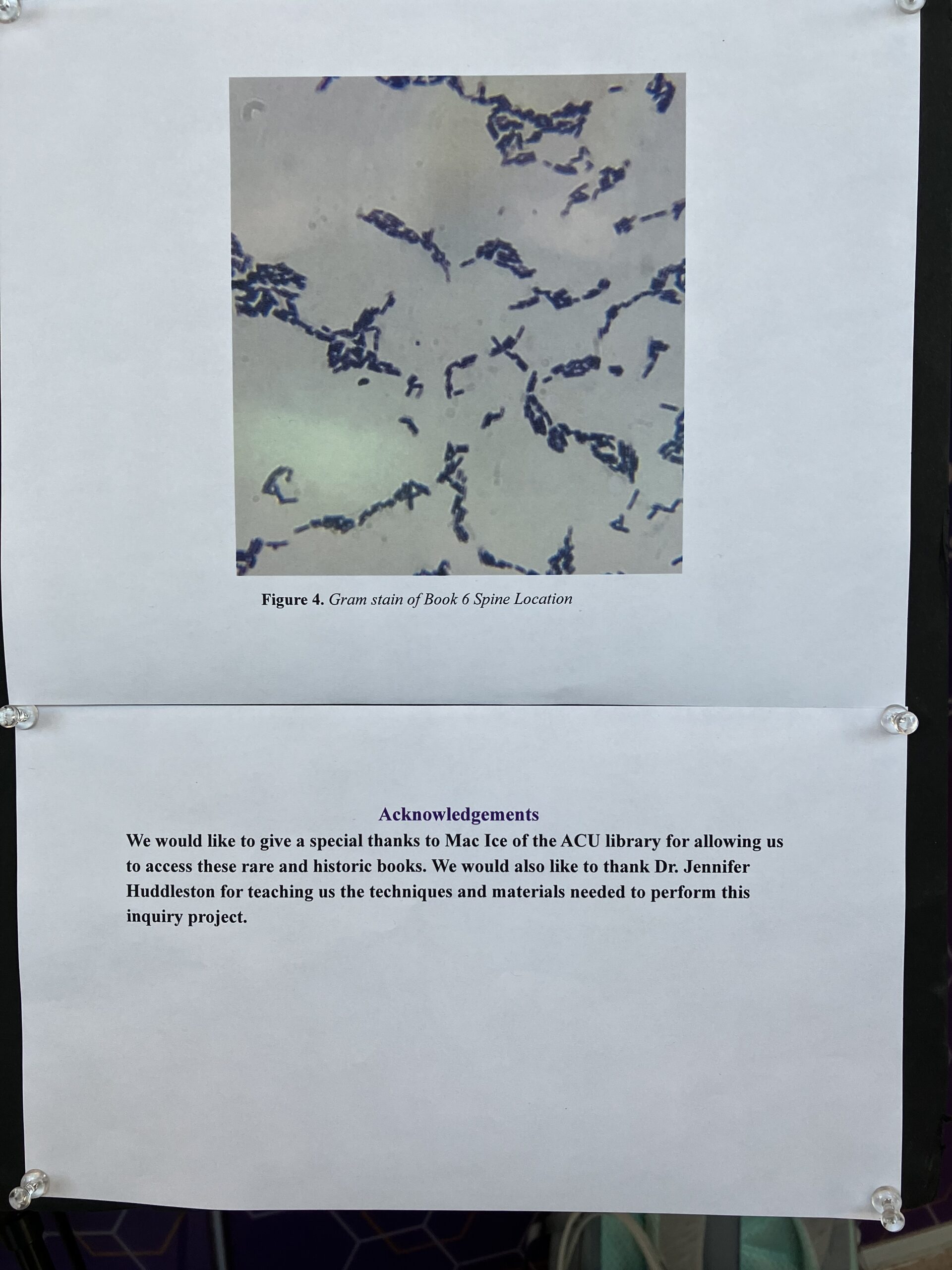
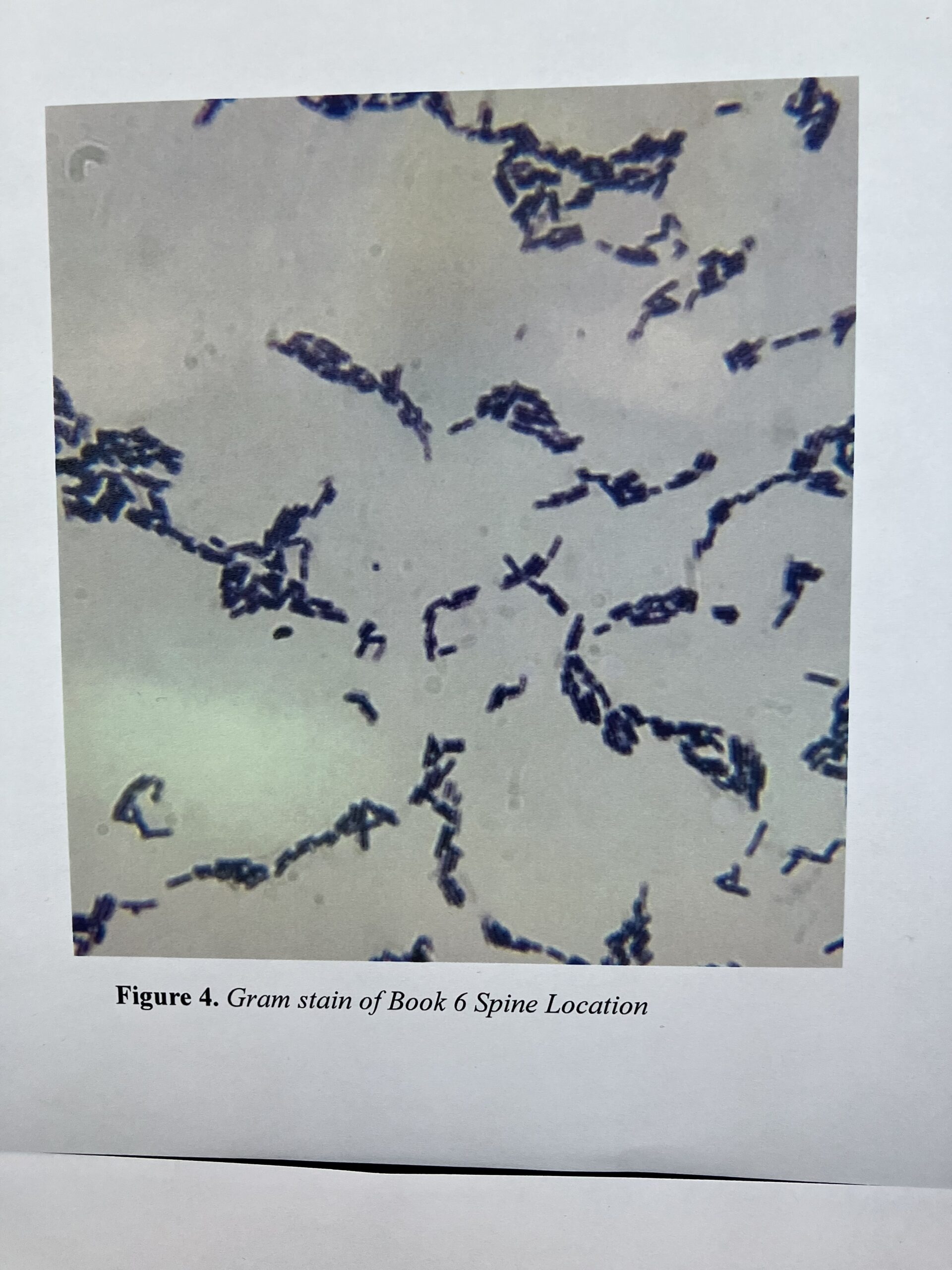

And they graciously shared their paper! Enjoy!


